10 Bizarre Street Foods You Won’t Believe People Eat

Street food is a window into the soul of a culture. It’s a culinary adventure that takes you on a journey through the heart of a city’s traditions and tastes, including some of the most Bizarre Street Foods you’ll ever encounter.
But what if that journey led you to the unexpected? To the bizarre and the unusual?
Welcome to the world of bizarre street foods. A realm where the ordinary is replaced with the extraordinary, and the familiar gives way to the strange.
From fertilized duck eggs in the Philippines to fermented shark in Iceland, these foods challenge our perceptions of what’s edible. They push the boundaries of our taste buds, daring us to step out of our comfort zones.
But why do we find these weird street foods so captivating? Is it the thrill of the unknown? The allure of the exotic? Or perhaps it’s the sheer audacity of these culinary creations that draws us in.
In this article, we’ll explore 10 of the most bizarre street foods from around the world. We’ll delve into their origins, their preparation, and the cultural significance they hold.
So buckle up, food adventurers. It’s time to embark on a gastronomic journey like no other. One that will challenge, surprise, and perhaps even delight your palate in ways you never thought possible.

The Global Craze for Unusual Eats
In recent years, the world has seen a growing fascination with unusual eats. People everywhere are eager to explore the unknown flavors that unconventional foods offer. Social media has played a crucial role in spreading this trend, making bizarre foods a global sensation.
From bustling street markets to trendy food trucks, adventurous eaters are in search of unique experiences. This culinary daring is not just about sampling exotic dishes; it’s a quest for stories. Each bite tells a tale, revealing cultural traditions and customs that are foreign yet intriguing.
Television shows and food bloggers have fueled this craze, turning bizarre street foods into must-try delicacies. By portraying eating as an adventurous journey, they inspire travelers and locals alike to push culinary boundaries. As a result, the hunger for the strange and unfamiliar only continues to grow, creating a world where the unusual becomes celebrated and sought after.
Why Bizarre Foods Captivate Us
The allure of bizarre foods lies in their novelty and surprise factor. They challenge our taste buds and evoke strong reactions, whether delight or disbelief. These unusual eats offer a break from the mundane, sparking curiosity and conversation.
Cultural intrigue also plays a part in their appeal. Trying bizarre street foods introduces us to new cultures and traditions, fostering understanding and connection. It’s a form of culinary tourism, allowing us to travel without leaving home.
Lastly, the thrill of the unknown makes these foods irresistible. There’s an element of risk and excitement in daring to taste something unexpected. For food adventurers, this challenge becomes a badge of honor, a testament to their fearless palate and open-mindedness.
1. Balut – Philippines’ Fertilized Delight
Balut is a staple in the Philippines, known for its distinctiveness and cultural significance. It consists of a developing duck embryo, boiled and eaten from the shell. The idea might seem off-putting, but it’s celebrated for its rich flavors and textures.
Vendors sell balut at night, often accompanied by stories of its aphrodisiac properties. The experience involves cracking the shell and sipping the savory broth first. Then, diners eat the yolk and embryo, embracing the thrill of eating the unfamiliar.
For many Filipinos, balut is comfort food with a history. It is a beloved snack at gatherings and street corners alike. Tourists and locals share in the audacious tradition, making balut a popular dare for those seeking culinary adventure.

2. Hákarl – Iceland’s Fermented Shark Challenge
Hákarl is not for the faint-hearted. This Icelandic delicacy involves Greenland shark, fermented and cured for months. Its preparation transforms toxic flesh into an edible, if not extreme, treat.
The aroma of hákarl is infamous, often described as ammonia-rich and pungent. It’s common to find it during Icelandic midwinter festivals. Locals savor it alongside shots of strong local schnapps called Brennivín to cut through the intensity.
Sampling hákarl is a rite of passage for culinary thrill-seekers visiting Iceland. Those who brave its scent often describe the taste as pleasantly fishy with a tangy aftertaste. For many, trying hákarl embodies a cultural experience that connects them to Icelandic tradition and resilience.
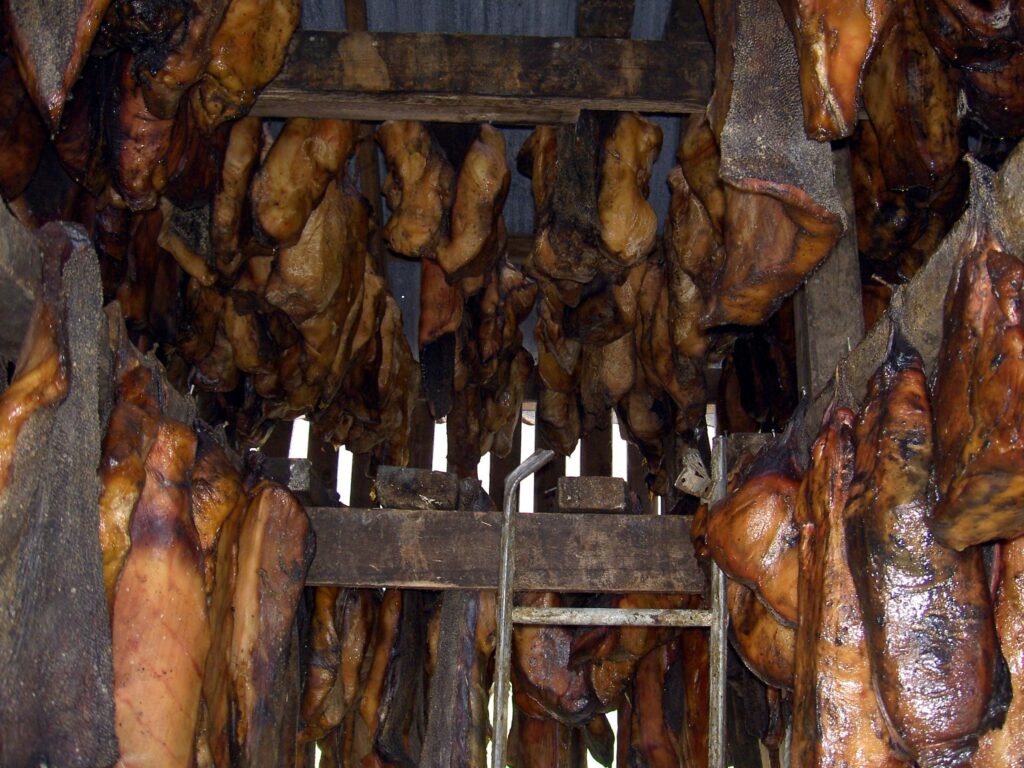
3. Casu Marzu – Sardinia’s Living Cheese
Casu Marzu takes cheese to a daring level. This Sardinian delicacy is made by introducing cheese fly larvae into pecorino. The larvae accelerate fermentation, breaking down fats into a soft, creamy texture.
Though illegal in the European Union, this cheese draws adventurous souls eager for its authentic taste. When eaten, the live larvae may wriggle, a sensation that adds to the unique experience. Locals believe consuming Casu Marzu offers a deep connection to Sardinian heritage.
The taste profile of Casu Marzu is strong and pungent, with an intense flavor that lingers. It’s often paired with a hearty slice of rustic bread, which balances its creamy character. For those brave enough to try, Casu Marzu offers an unforgettable taste adventure rooted in tradition and boldness.

4. Fried Tarantulas – Cambodia’s Crunchy Critters
In the bustling streets of Cambodia, fried tarantulas are a sought-after snack. Once feared, these eight-legged creatures have become a culinary staple. They are usually sold by the handful in local markets.
Preparation is simple yet transformative. The tarantulas are seasoned with salt and sugar, then deep-fried to a crispy finish. This cooking method creates a savory snack, crunchy on the outside with a soft interior.
The taste surprises most first-timers with its mix of earthy flavors and a hint of saltiness. The legs offer a crispy bite, while the body provides a more complex, rich texture. Fried tarantulas reflect Cambodia’s resilience, turning necessity into culinary ingenuity, a testament to the nation’s adaptive spirit.
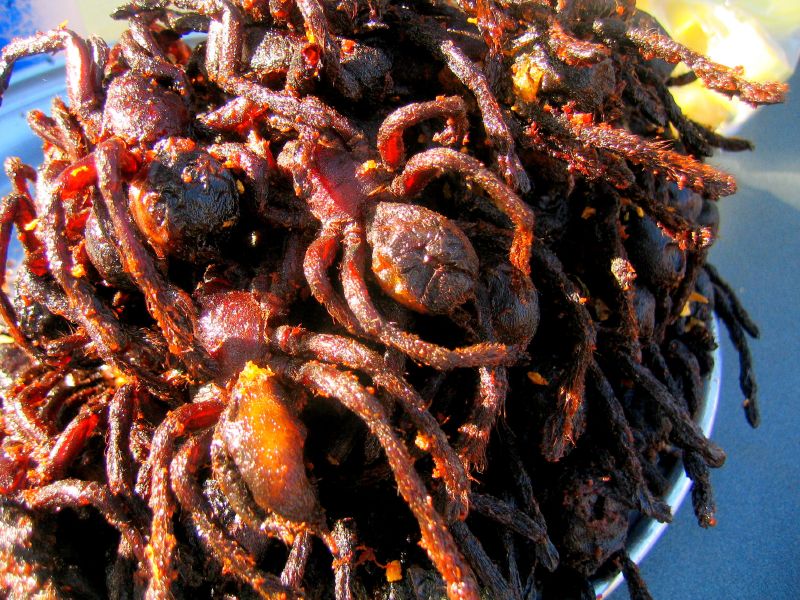
5. Surströmming – Sweden’s Pungent Pleasure
Surströmming is a food that divides opinions, notorious for its strong, pungent odor. This Swedish specialty is made from Baltic herring, fermented for months until it reaches its distinctive aroma. It’s often referred to as one of the smelliest foods in the world.
Opening a can of surströmming is an experience in itself. Many suggest doing it outdoors, owing to the powerful scent that can linger. Despite its smell, it’s a favorite among locals, typically enjoyed with thin flatbread, boiled potatoes, and a bit of dill.
The bold taste is briny and slightly sour, creating a complex flavor profile that daring foodies might appreciate. It’s a reminder of traditional preservation methods and a cultural icon in Sweden. Though it may challenge your senses, for many, it’s an unforgettable taste of Swedish heritage.

6. Century Eggs – China’s Time-Honored Treat
Century eggs, also known as hundred-year eggs, are a Chinese delicacy known for their striking appearance and unique flavor. These eggs are preserved in a mixture of clay, ash, and quicklime for several weeks to months. This process transforms the white into a dark, gelatinous substance and the yolk into a creamy, greenish center.
To the uninitiated, their appearance can be startling. The translucent amber “white” contrasts sharply with the dark yolk, offering a visual feast. But it’s the taste that truly sets century eggs apart. They’re intensely savory, with notes of sulfur and ammonia, and a smooth, creamy texture that lingers on the palate.
Often served as a savory starter or alongside pickled ginger, they are a testament to China’s culinary history of preservation. Century eggs invite diners to experience flavors well outside typical Western norms, providing a bold foray into the depths of umami-rich tastes. This dish challenges perceptions and offers a taste adventure, embodying centuries of traditional Chinese cuisine in each bite.

7. Stinkheads – Alaska’s Fermented Fish Heads
In the remote regions of Alaska, one dish boldly stands out in the culinary landscape: stinkheads. This unique delicacy consists of salmon heads that undergo a natural fermentation process. They’re traditionally buried in the ground, allowing them to decompose and develop a strong, distinct aroma over weeks.
Stinkheads are a significant part of the cultural heritage of Alaska Native communities. They symbolize the resourcefulness required in a challenging environment, showcasing a method to preserve food in its simplest form. The pungent aroma, often likened to strong cheese or fish, might be daunting to some. However, to those familiar, it’s a cherished smell of tradition and sustenance.
For those bold enough to try stinkheads, the flavor experience can be quite rewarding. The texture is creamy, with a tang that surprises the palate. Eating stinkheads invites culinary thrill-seekers to delve into the deep connections between food and cultural resilience. It’s a taste of history that echoes the spirit of survival and adaptation.
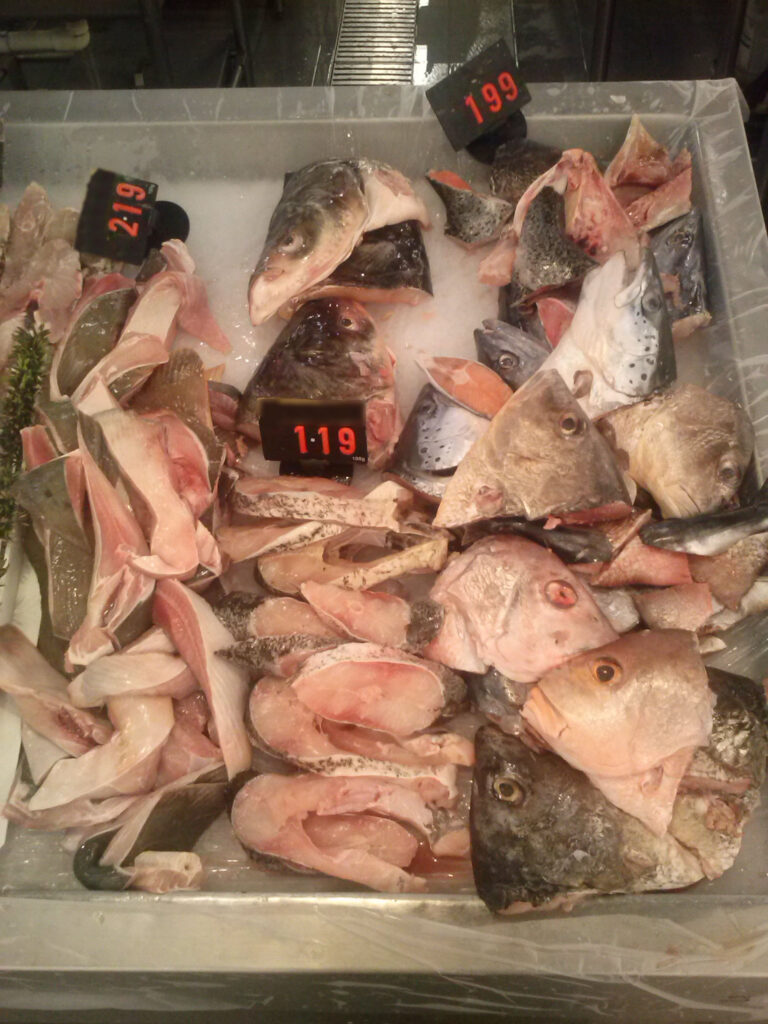
8. Escamoles – Mexico’s Insect Caviar
Nestled within Mexico’s vibrant culinary tapestry lies escamoles, known endearingly as “insect caviar.” These are ant larvae harvested from the roots of agave or tequila plants. Far from a modern innovation, escamoles have been a delicacy dating back to the time of the Aztecs. Their historical importance and unique taste keep them a sought-after treat even today.
Escamoles are prized for their subtle, nutty flavor and creamy texture. Often sautéed with butter, garlic, or herbs, they offer a distinct culinary experience. In upscale Mexican restaurants, you might find them served with guacamole or in tortillas. The rich taste of escamoles balances the adventurous undertaking they represent, appealing to those who crave new gastronomic experiences.
Considered a luxury ingredient, escamoles command a high price, akin to beluga caviar. Trying them can be a rite of passage for food enthusiasts eager to venture beyond the usual. By indulging, you partake in a tradition that showcases Mexico’s innovative use of its natural bounty. It’s an adventure for your taste buds and your culinary curiosity alike.
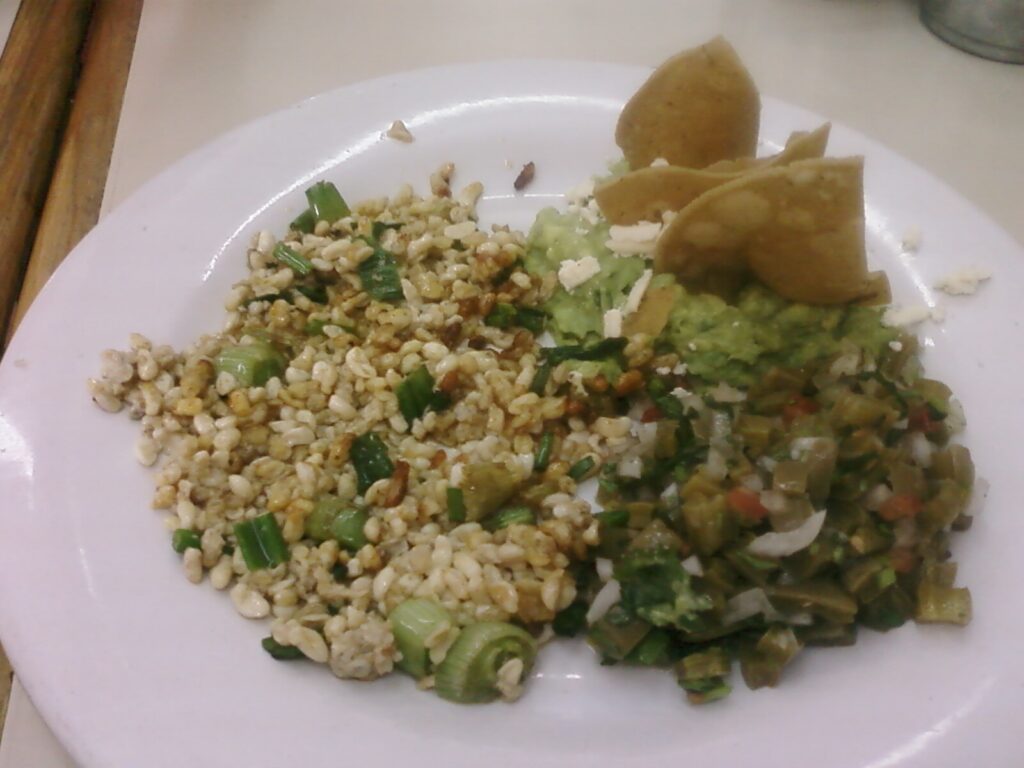
9. Fugu – Japan’s Risky Fish Delicacy
Fugu, the infamous Japanese pufferfish, is both a culinary thrill and a testament to meticulous skill. This dish is renowned for the lethal toxins it harbors, toxins that can be deadly if improperly prepared. Only specially licensed chefs, who undergo years of rigorous training, are allowed to prepare fugu. Their expertise ensures that each serving is as safe as it is tantalizing.
The allure of fugu lies in its delicate, almost ethereal taste, a reward for those who dare to take the plunge. Whether served sashimi-style, with thin, translucent slices arranged beautifully on a plate, or as part of a hotpot, fugu offers a unique experience. The risk involved adds an element of excitement to the meal, drawing thrill-seekers from all corners of the globe.
In Japan, fugu is also a cultural symbol, representing the harmony between daring and discipline. The willingness to try fugu showcases an adventurous spirit and respect for Japanese culinary heritage. It embodies a perfect blend of tradition and boldness, making it a must-try for intrepid gourmets everywhere.

10. Sannakji – South Korea’s Wriggling Octopus
Sannakji is a South Korean dish that tests both bravery and dexterity. It features live octopus, chopped and seasoned, with its tentacles still squirming on the plate. This movement is not just a testament to freshness but also a challenge to diners.
Eaters must be cautious with sannakji due to the suctions on the tentacles, which cling to any surface they touch. This makes it an exhilarating experience, as even a small piece can get spirited away while on the chopsticks. It’s crucial to chew thoroughly, savoring each bite’s faint oceanic taste mixed with sesame oil.
This dish isn’t just about consuming seafood; it’s an embodiment of spontaneity and vitality. For many, experiencing sannakji is a rite of passage, a way to engage directly with the raw vibrancy of the sea. Adventurers often leave with tales of their daring exploits, making sannakji a cultural bridge and a personal conquest.
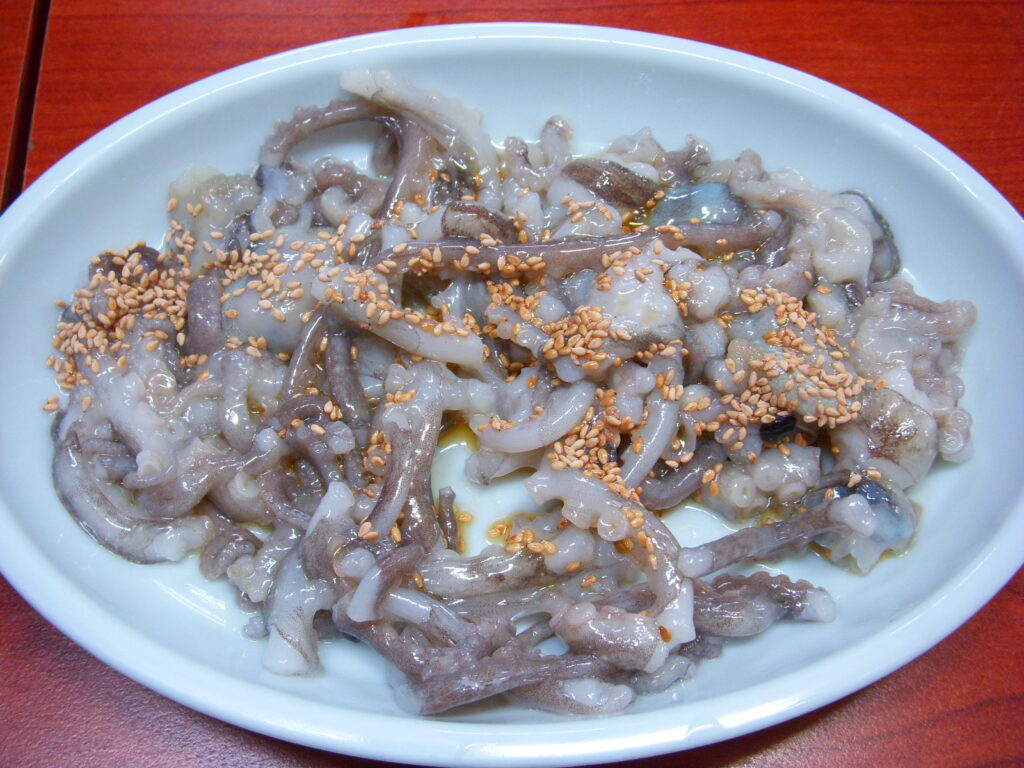
The Role of Food Trucks in Serving the Strange
Food trucks have become culinary pioneers, introducing bizarre street foods to curious palates everywhere. Their mobility allows them to bring exotic flavors directly to adventurous eaters. From bustling urban centers to serene parks, food trucks are spreading the thrill of the strange.
Equipped with compact yet efficient kitchens, these trucks can prepare unconventional dishes on the go. This setup enables them to serve up delicacies like fried tarantulas or balut with speed and flair. The captivating allure of tasting these oddities draws long lines and eager tasters.
Moreover, food trucks are platforms for cultural exchange, offering an international mosaic of tastes in one place. By presenting bizarre street foods with stories of origin and preparation, they transform meals into experiences. This approach doesn’t just satisfy hunger—it connects people through shared culinary adventures.
Safety First: Enjoying Bizarre Foods Responsibly
Enjoying bizarre street foods comes with its own set of challenges. Always prioritize safety when diving into culinary adventures. Ensure the food is from reputable vendors who adhere to proper hygiene standards to prevent health issues.
Understand the ingredients thoroughly before indulging. This is crucial, especially for those with allergies or dietary restrictions. Transparency and proper labeling from vendors can make all the difference in a safe dining experience.
Education is key when trying unfamiliar foods. Research how dishes are traditionally prepared and served. This knowledge not only enhances the experience but also safeguards against any potential mishaps. By being informed and cautious, you can fully embrace the excitement of tasting the world’s weird street foods without worry.
Conclusion: The Thrill of Culinary Adventure
Exploring bizarre street foods offers more than just a meal—it’s a journey. It connects us with different cultures in unexpected, memorable ways. Each bite tells a story of tradition, innovation, and local passion.
